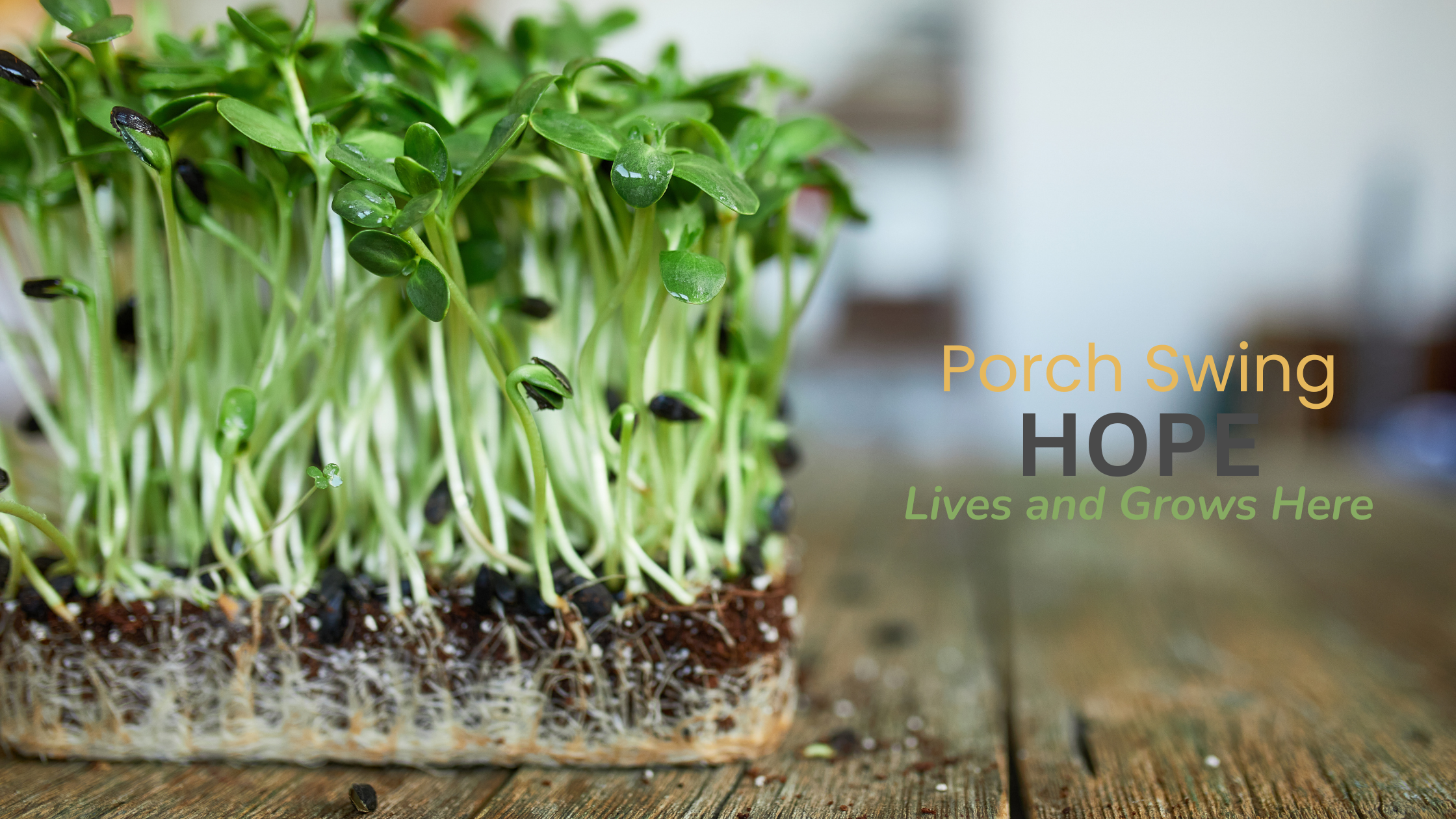Starting Small: Your First Microgreens and Your First Steps Toward Hope

I killed my first three attempts at growing microgreens.
Overwatered the first batch until they molded. Forgot about the second batch until they'd dried to little green paper. The third batch never even sprouted, probably because I was trying too hard to make everything perfect.
But something about those tiny seeds kept calling me back, whispering promises about hope that starts small and grows daily.
Why Microgreens Are Perfect for Hope-Building
In a world where everything feels overwhelming and sometimes everything seems impossible, here's something that promises visible results in just 7-10 days. Small seeds that don't require perfect conditions, just consistent attention. Tiny investment with reliable return.
Microgreens teach hope because they prove:
- Small beginnings can yield real nourishment
- Consistency matters more than perfection
- Growth happens even when you can't see it at first
- Daily tending creates abundance over time
- Mistakes become lessons, not failures
The Sit-a-Spell Approach to Growing
Our culture wants instant everything - instant results, instant transformation, instant success. But microgreens grow on nature's timeline, not ours. They need what we all need: time, attention, and trust in the process.
Growing includes:
- Checking your trays with morning coffee instead of anxious hovering
- Trusting the darkness where germination happens unseen
- Finding satisfaction in small daily progress
- Accepting that some batches fail and starting again anyway
Your Simple Starting Guide
What you actually need:
- Growing trays (even recycled containers work)
- Potting soil or growing medium
- Seeds (sunflower, pea, or radish for beginners)
- A spot with indirect light
- Five minutes daily for gentle care
The forgiving process:
- Soak seeds overnight in cool water
- Spread evenly over moist growing medium
- Cover lightly with soil or another tray
- Keep gently moist but not waterlogged
- Uncover when shoots appear (usually day 3-4)
- Harvest when first true leaves develop
Why I Choose Beginner-Friendly Varieties
Sunflower microgreens: Large seeds that are hard to mess up, nutty flavor, substantial nutrition
Pea shoots: Sweet taste, familiar to most people, gorgeous green color
Radish: Fast growing, spicy kick that wakes up your taste buds, almost foolproof
These varieties forgive beginner mistakes and provide encouragement through quick, reliable results.
The Hope Connection in Daily Tending
Every morning when I check my growing trays, I'm reminded that hope often looks like showing up consistently for small things. Misting gently. Rotating for even light. Removing any debris that might harbor problems.
These tiny actions mirror hope-building in life:
- Daily practices matter more than dramatic gestures
- Consistent attention creates compound results
- Small problems addressed early prevent bigger issues
- Growth requires both action and patience
Learning from My Growing Failures
Overwatering taught me that enthusiasm without wisdom can kill what we're trying to nurture
Neglect taught me that growth requires sustained attention, not just initial effort
Failed germination taught me that some factors are beyond our control, and starting over is always possible
Each failure contained seeds of wisdom for the next attempt.
The Microgreens Metaphor for Life Changes
Want to improve your health? Start with adding fresh microgreens to one meal daily instead of overhauling your entire diet.
Want to strengthen relationships? Practice one small act of kindness consistently instead of grand gestures that can't be sustained.
Want to grow spiritually? Spend five minutes in quiet reflection each morning instead of committing to hours of meditation you'll abandon after a week.
Building Confidence Through Small Wins
There's something powerful about successfully growing food in your own kitchen. It connects you to ancient rhythms, proves your ability to nurture life, and provides tangible evidence that your care creates results.
Early success with microgreens builds:
- Confidence in your ability to tend and nurture
- Connection to food and where nourishment comes from
- Proof that small daily actions create meaningful outcomes
- Skills that can expand into larger growing projects if desired
This Week's Hope-Growing Challenge
Start one small tray of microgreens. As you plant the seeds, think about one area of your life where you'd like to see growth. Let the daily tending of your plants remind you to tend that area with the same gentle consistency.
Notice the parallels between growing food and growing hope: both require patience, both respond to consistent care, both prove that small beginnings can become sustaining nourishment.
The Abundance That Starts Small
My first successful batch of sunflower microgreens yielded enough fresh greens for salads, sandwiches, and smoothies for two weeks. From a $3 packet of seeds and basic supplies I already had.
But the real abundance wasn't just the food - it was the proof that I could create something nourishing through simple, consistent care. That small actions, repeated daily, yield results worth celebrating.
When Growing Feels Too Simple to Matter
In our complex world, growing microgreens might seem almost silly. Too simple to address real problems, too small to make meaningful difference.
But sometimes hope comes through the simplest practices. Sometimes the strongest faith grows in the smallest containers with the most basic care.
Start small, friends. Hope lives and grows here, one tiny seed at a time.
Visit Our Porch Swing Shop.

